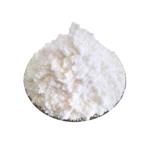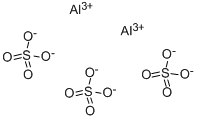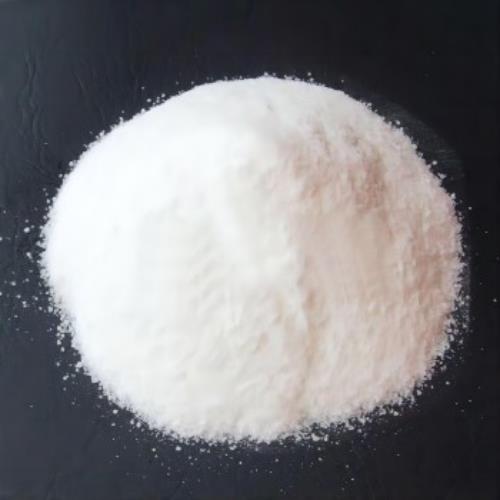Property and Application of Aluminum Sulfate
General description
Aluminum sulfate is very soluble in water and cannot be dissolved in pure sulfuric acid (only coexisting), but it is dissolved in water together with sulfuric acid in sulfuric acid solution, so the solubility of aluminum sulfate in sulfuric acid is the solubility of aluminum sulfate in water [1]. The precipitation at room temperature contains 18 molecules of crystal water, which is aluminum sulfate 18 water. In industry, it is mostly aluminum sulfate 18 water (Al2(SO4)3.18H2O). It contains 51.3% anhydrous aluminum sulfate, which will not be autosoluble (soluble in its own crystal water) even at 100 °C. It is not easy to lose crystal water due to weathering, and is relatively stable. It will lose water when heated, and will decompose into alumina and sulfur oxides at high temperature [2].
Solubility
Aluminum sulfate in pure sulfuric acid is insoluble (just coexistence), in sulfuric acid solution with sulfuric acid dissolved in water, so the solubility of aluminum sulfate in sulfuric acid is the solubility of aluminum sulfate in water. The solubility of aluminum sulfate is 31.2 g at 0 °C; 33.5 g at 10 °C; 36.4 g at 20 °C; 40.4 g at 30 °C; 45.7 g at 40 °C; 52.2 g at 50 °C; At 60 ℃, 59.2 g; 66.2 g at 70 °C; 73.1 g at 80 °C; 86.8 g at 90 °C; 89 grams at 100 °C.
Application
Aluminum sulfate is mainly used for turbidity water purification, also used as a precipitating agent, fixing agent, fillers, etc. It is used as antiperspirant cosmetic ingredients (astringent) in cosmetics. In addition, aluminum sulfate can also be used as paper industry sizing agent (rosin sizing, so that the color will be attached to the paper), leather tanning agents, mordant, purifying agent (flocculant, the resulting aluminum hydroxide may be coated with microparticles suspended in the water to promote rapid sedimentation separation), foam fire extinguisher inside agent (outside agent is sodium bicarbonate, carbon dioxide is generated after the reaction), raw materials for manufacturing alum, and white aluminum, oil bleaching, deodorization agent; pharmaceutical raw materials, as food curing agent (excipient); for impurities removal of oil, water, etc, pasteurized albumin stabilizer, lake raw materials, waste water treatment agent, waterproof concrete materials, fireproof raw materials [3, 4].
Aluminum sulfate is a widely used industrial reagent, often confused with alum. Alum is a double salt of aluminum sulfate and potassium sulfate, while aluminum sulfate is a single salt. Double salt, also known as heavy salt, is composed of two or more single salts, ionized in solution as single salt ions. Aluminum sulfate is commonly used as a flocculant in drinking water purification and wastewater treatment equipment, as well as in the paper industry. Naturally, aluminum sulfate is almost never present as anhydrous salts. It forms a series of hydrates, of which aluminium sulfate hexadecahydrate is the most common. Aluminum sulfate is also an effective mollusk insecticide, killing Spanish slugs [5]. Aluminum sulfate is used for purifying water and as a medium in textile printing and dyeing. In water purification, it condenses impurities and makes them easier to precipitate and filter. When dissolved in a large amount of neutral or slightly alkaline water, colloidal precipitation of aluminum hydroxide, Al(OH)3 is produced. When dyeing fabrics, the aluminum hydroxide gel makes it easier for the dye to adhere to the plant fiber. Aluminum sulfate is also used to regulate soil pH because it hydrolyzes to aluminum hydroxide while producing a small dilute solution of sulfuric acid [6].
Studies have shown that aluminum sulfate can promote soil microbial activity and promote the decomposition and synthesis of microorganisms, thereby reducing the pH and the content of carbonate and bicarbonate, increasing the content of sulfate ions. A long-term addition of high amounts of inorganic fertilizer can lead to disruption of soil fertility. Applying organic amendment to saline soil increases the abundance of soil organisms, while the abundance of soil organisms plays an important role in saline soil remediation [7].
Quality standards
1, All levels of refined aluminum sulfate can be used for producing all levels of precipitation paper sizing agents, class A, B and C is used for water purification, in which arsenic (AS2O3) content should be not more than 0.01%.
2, Aluminum sulfate size: all through the 10 mm mesh sieve, among which the 8 mm sieve fine is not less than 98%, but can also be made bulk product according to user`s requirements.
3, Appearance and color of refined aluminum sulfate is white.
4, All levels of crude aluminum sulfate can be used for water purification, aluminum sulfate used for purification cannot be produced by waste acid toxic substances.
5, Aluminum sulfate used in paper sizing, Al2O3 content should be more than 12%, iron content less than 0.2%, insolubles should be not more than 0.5%. Fine paper production requires iron content of aluminum sulfate should be less than 0.08%, this kind of aluminum sulfate is called iron-free aluminum sulfate.
Identification test
With 10% of the sample solution, the aluminum (IT-2) and sulfate (IT-29) test should be positive. Solubility is measured by the OT-42 method, Easily soluble in water, insoluble in ethanol. pH is measured with a glass electrode 5% aqueous solution, the value is 2.9 or more [8].
Content analysis
The sample of about 4g is accurately weighed, put into a 250ml volumetric flask, dissolved in water and mixed in constant volume. The solution of 10ml is Drew, transferred into a 250ml beaker, adding 0.05mol/L disodium EDTA solution of 25.0ml and pH of 4.5 buffer (made by mixing ammonium acetate of 77.1g and acetic acid of 57ml , adding water to constant volume of 1000m1) 20ml, boiled by slow fire for 5min . After cooling, adding ethanol of 50ml and dithizone test solution (TS-94) of 2ml [9]. Titration With 0.05mol/L zinc sulfate to the bright red rose, while conducting a blank titration. 0.05mol/L disodium EDTA equivalent amounts to aluminum sulfate [Al2 (SO4)3] of 8.554mg, or aqueous aluminum sulfate [Al2 (SO4)3·18H2O] of 16.66mg [10].
Emergency treatment
Skin contact: take off contaminated clothing and rinse with running water.
Eye contact: lift eyelid, rinse with running water or normal saline. Go to a doctor.
Inhalation: Away from site to fresh air. If breathing is difficult, give oxygen. Go to a doctor.
Eat: drink enough warm water to induce vomiting. Go to a doctor.
Fire control measures
Hazardous characteristics: no special combustion and explosion characteristics. High thermal decomposition produces toxic sulphide smoke.
Harmful combustion products: Natural decomposition products unknown.
Fire fighting method: fire fighters must wear full body fire prevention and gas protective clothing, fire fighting in the upwind. When extinguishing a fire, move the container from the fire site to an open area as far as possible.
Leakage emergency treatment
Contaminated areas need to be isolated and restricted. It is recommended that emergency personnel wear dust masks (full hoods) and protective clothing. Use a clean shovel to collect in a dry, clean, covered container and transfer to a safe place. If a large amount of leakage, collection recovery or transported to the waste treatment site disposal.
Operation, disposal and storage
Operation precautions: closed operation, local exhaust. Operators must be specially trained and strictly abide by the operating procedures. It is recommended that the operator wear a self-priming filter dust mask, chemical safety glasses, protective clothing and rubber gloves. Operators should avoid dust generation and oxidizing agent contact. When handling, operators need to unload lightly to prevent package damage. Emergency treatment equipment is equipped. Empty containers may contain hazardous materials [11].
Storage precautions: Store in a cool and ventilated warehouse. Keep away from fire and heat source. Oxidizer should be stored separately, and mixed storage should not be avoided. The storage area shall be equipped with suitable materials to accommodate leaks [12].
References
[1] T.B. Kinraide, D.R. Parker, Non‐phytotoxicity of the aluminum sulfate ion, AlSO+ 4, Physiologia Plantarum 71(2) (1987) 207-212.
[2] L.-J. Liao, Y.-H. Lin, K.-L. Huang, W.-S. Chen, Vase life of Eustoma grandiflorum as affected by aluminum sulfate, Botanical Bulletin of Academia Sinica 42 (2001).
[3] P. Moore Jr, T. Daniel, D. Edwards, Reducing phosphorus runoff and inhibiting ammonia loss from poultry manure with aluminum sulfate, Journal of Environmental Quality 29(1) (2000) 37-49.
[4] X. Sun, Y. Sun, J. Yu, Cooling crystallization of aluminum sulfate in pure water, Journal of Crystal Growth 419 (2015) 94-101.
[5] Y. Zhou, Z. Liang, Y. Wang, Decolorization and COD removal of secondary yeast wastewater effluents by coagulation using aluminum sulfate, Desalination 225(1-3) (2008) 301-311.
[6] M.B. Baskan, A. Pala, A statistical experiment design approach for arsenic removal by coagulation process using aluminum sulfate, Desalination 254(1-3) (2010) 42-48.
[7] M. Farina, F. Lara, R. Brandao, R. Jacques, J. Rocha, Effects of aluminum sulfate on erythropoiesis in rats, Toxicology letters 132(2) (2002) 131-139.
[8] G. Johansson, G. Lundgren, L. Sillen, R. Soderquist, On the crystal structure of a basic aluminum sulfate and the corresponding selenate, Acta Chem. Scand 14(3) (1960) 769-771.
[9] J. Kloprogge, J. Geus, J. Jansen, D. Seykens, Thermal stability of basic aluminum sulfate, Thermochimica Acta 209 (1992) 265-276.
[10] W. Lee, P. Westerhoff, Dissolved organic nitrogen removal during water treatment by aluminum sulfate and cationic polymer coagulation, Water Research 40(20) (2006) 3767-3774.
[11] P. Moore Jr, T. Daniel, J. Gilmour, B. Shreve, D. Edwards, B. Wood, Decreasing metal runoff from poultry litter with aluminum sulfate, Wiley Online Library, 1998.
[12] A. Pinotti, N. Zaritzky, Effect of aluminum sulfate and cationic polyelectrolytes on the destabilization of emulsified wastes, Waste Management 21(6) (2001) 535-542.
You may like
Related articles And Qustion
See also
Lastest Price from Aluminum sulfate manufacturers

US $10.00/KG2025-04-21
- CAS:
- 10043-01-3
- Min. Order:
- 1KG
- Purity:
- 99%
- Supply Ability:
- 10 mt

US $6.00/kg2025-04-21
- CAS:
- 10043-01-3
- Min. Order:
- 1kg
- Purity:
- 99%
- Supply Ability:
- 2000KG/Month


